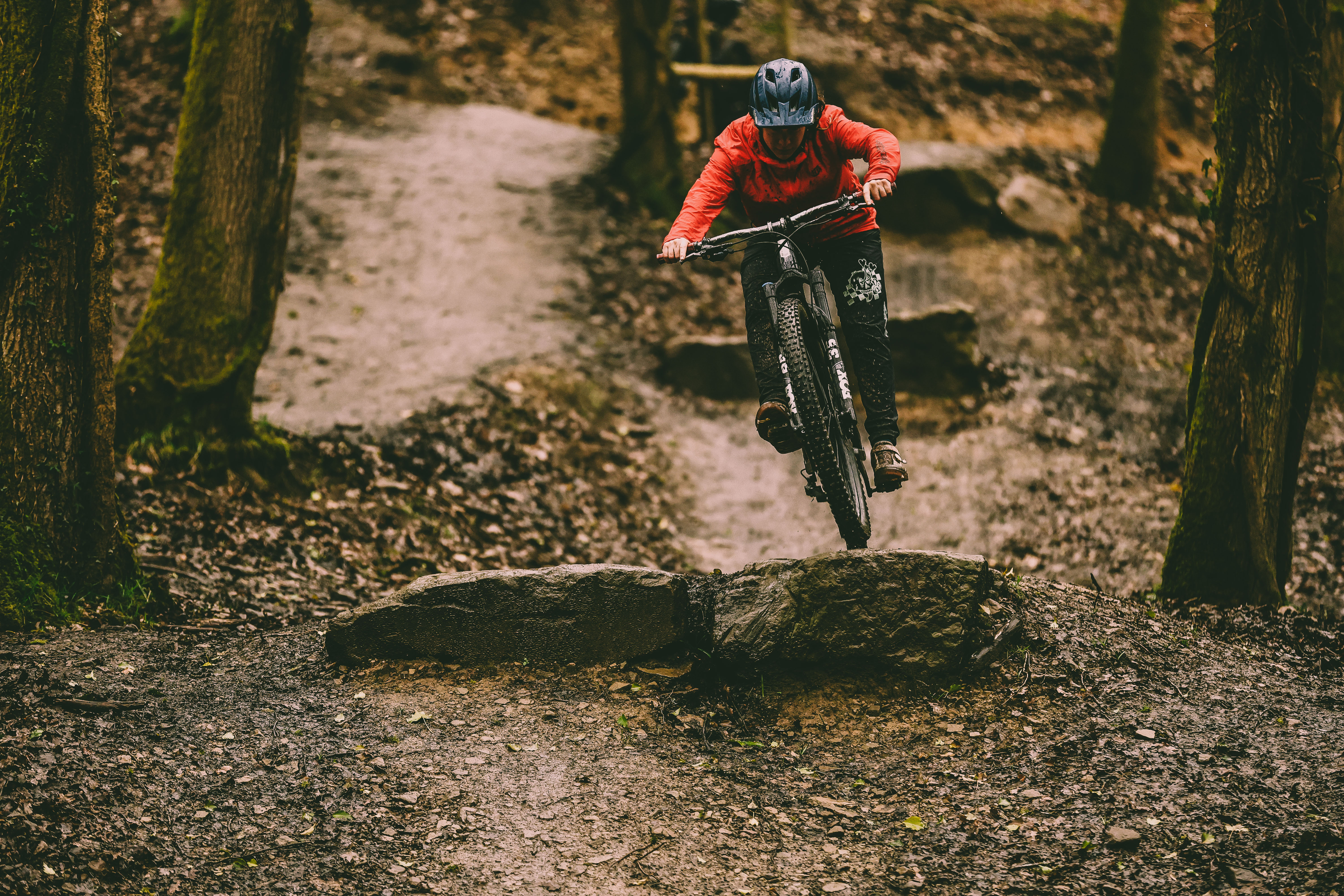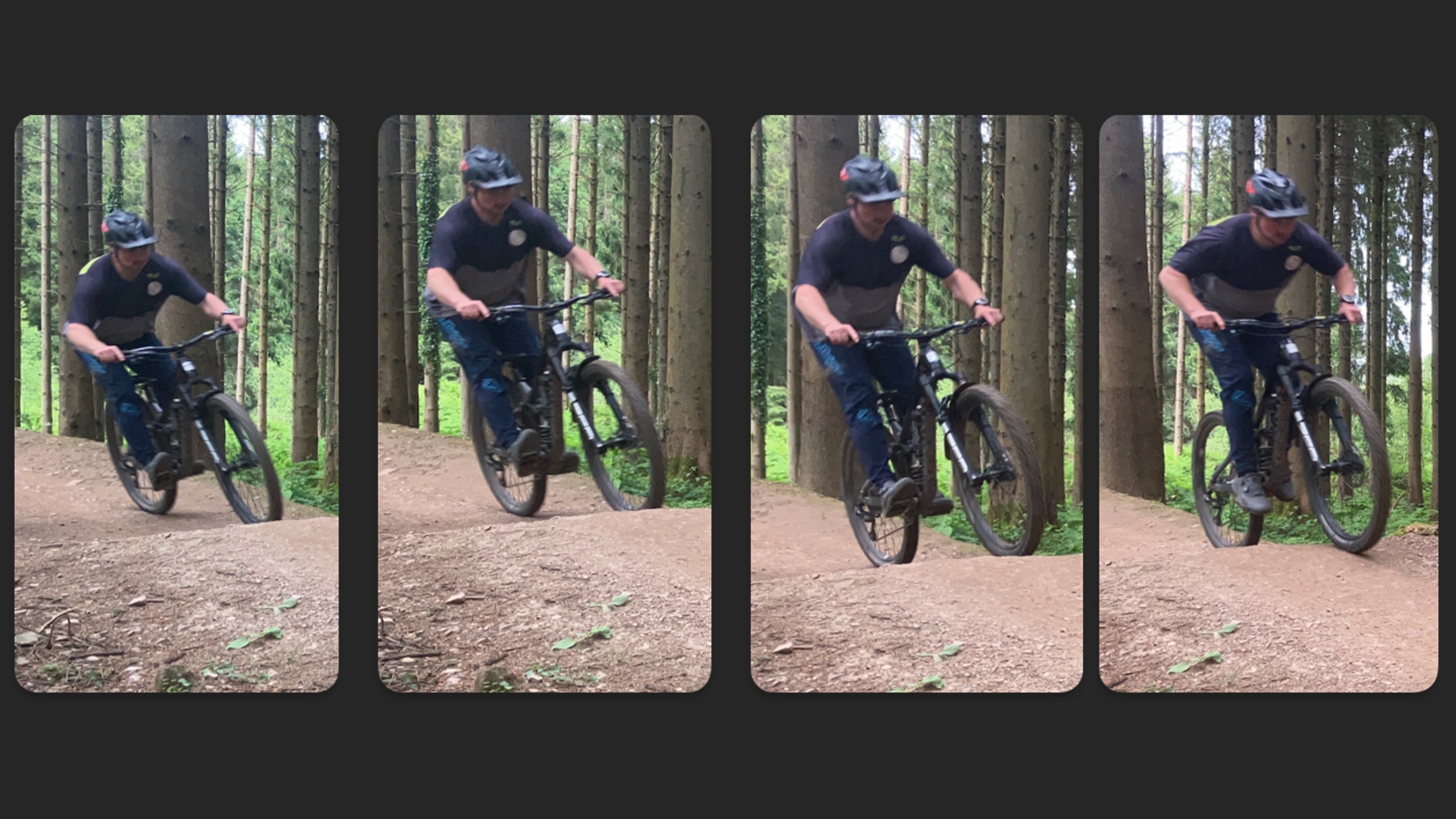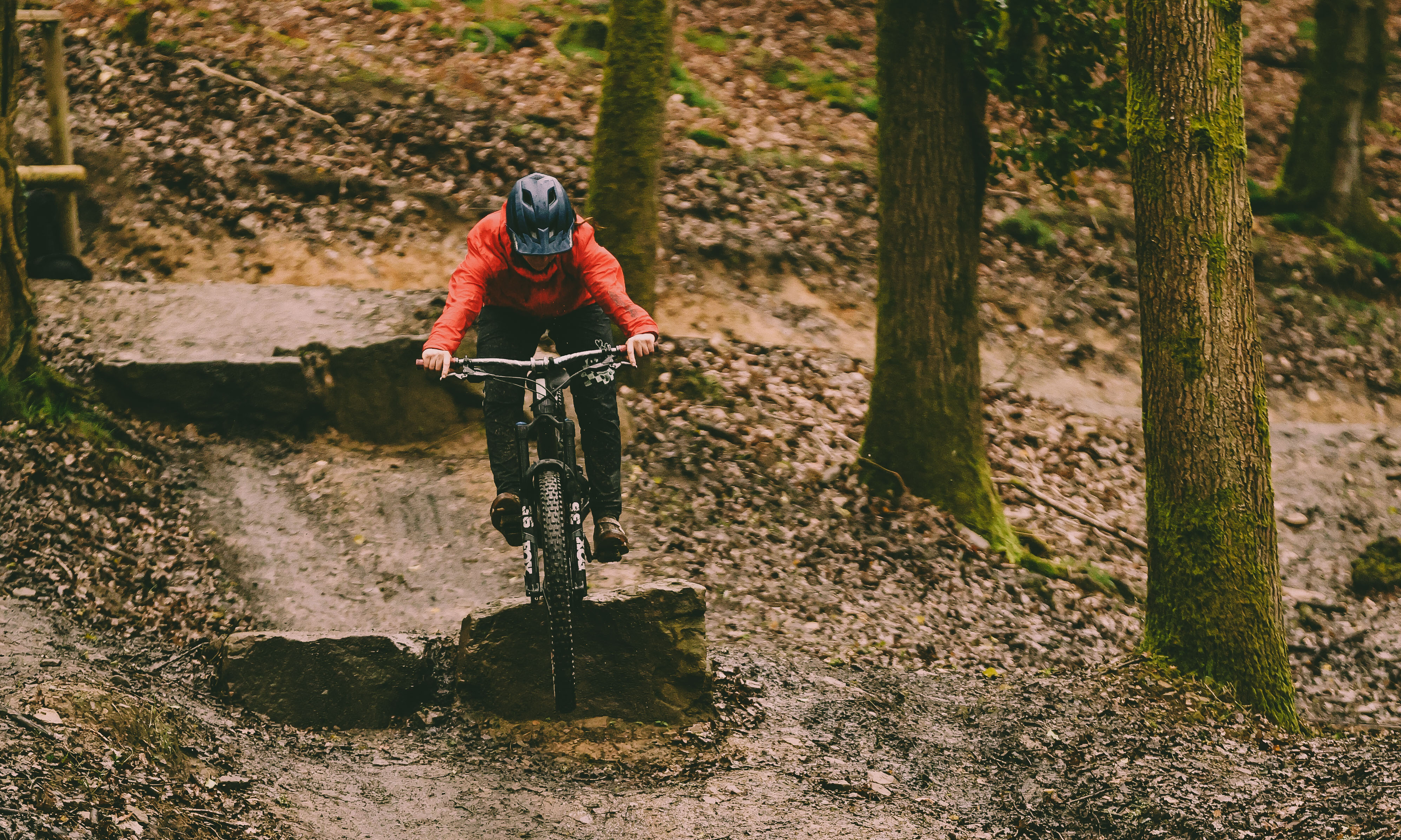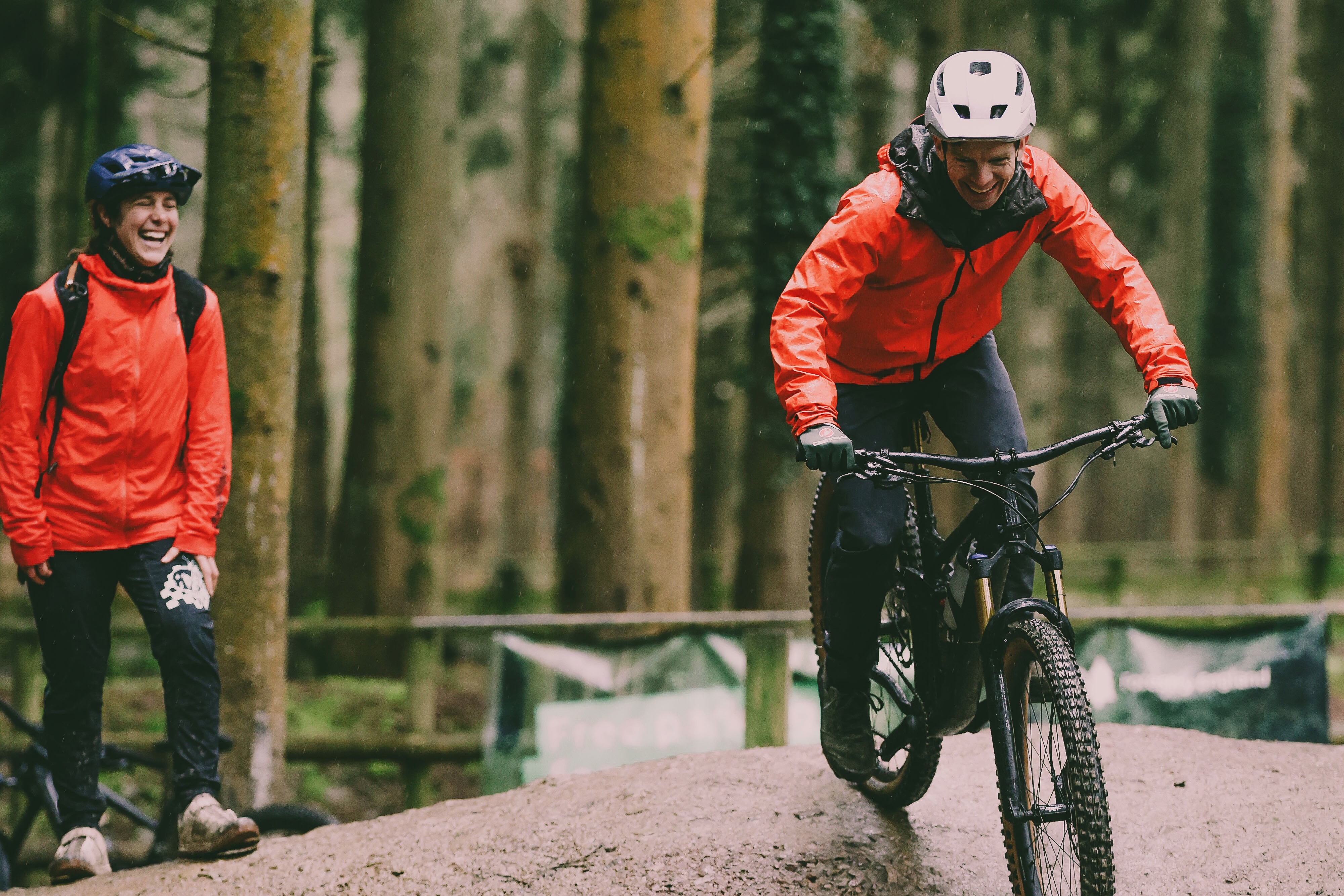
When you’re a mountain bike coach, diagnosing people's technique problems is hard enough. Then explaining the solutions in a way that they can put into practice takes a special sort of genius.
One of the smallest but most impactful tips from my recent eye-opening session with Katy Curd Coaching was how heel movement can impact your whole body position on the bike – which in turn affects the way the bike handles.
Most coaches already teach a heels-down position when you are standing out of the saddle on a mountain bike, to keep the foot secure on the pedal and to encourage a low centre of gravity.
And plenty of coaches teach weighting/unweighting techniques that are vital to grip and flow – you may have heard them described as making yourself big or small on the bike, for example.
Katy combines these things by recognizing that the movement of swinging your heels from an up position to a down-and-under position (or vice versa) also rocks your whole body into a different position and gives the bike a valuable shove of momentum.
Let’s look at how this can be a great help on rollers and drops.
On a pump track or any sequence of rollers

On a pump track or any sequence of rollers, you’ll be in a relaxed, standing position with arms and legs somewhat bent, and feet flat on the pedals. Katy explained that to maximise your momentum, as you come down off a roller, or towards the bottom of the next up, sweep your heels down from 3 o’clock, to give a down and forward shove. They won’t go past 6 o’clock, but imagine them doing that, to emphasise the vital forward movement.
Then as you go into an up, reverse the movement and go up to 2 o’clock. Your heels, your hips and your upper body will unweight the bike and help lift you over the rise, ready for you to add more momentum on the downward side.
It took me a good while to feel this happening but I was determined not to leave the pump track until I could feel it, since so many of my previous ‘learnings’ had been much more in theory than practice.

First I had to stop myself just moving vertically up and down, which helped very little with momentum and meant I just ground to a halt long before I needed to. Once I scooped the heels properly down and forward, I got much further round the track.
I also found that nudging the foot position forward or back on the pedal made a real difference to how easy or hard it was to pivot the heel down and round.
On fast downhill rollers
You can also use heel movement to help maximise speed and control on fast downhill rollers, where the bike would naturally want to get air off the crest of every roller. Here you might start bringing the heels down as soon as you're at the top of a roller. This would help keep the wheels nicely in contact with the ground, without sacrificing any of the flow that the downhill and the rollers gives you.
On drops and slabs where you want to bring the bike down quickly
Katy spent a lot of time teaching how your arm movement helps to control the arc of the bike once it leaves the lip of a steep slope or drop. But she followed it up by explaining how heel movement adds to that control.
On steep slopes or, say, drops with steeply sloped landings where you want to both tires back into contact with the ground as early as you can, you push forward and down with your arms after leaving the lip. The magic with the heels is that if you also scoop down with them, you help to scoop the rear of the bike down, bringing both the front and back wheels into contact with the ground ASAP and reducing the nose-down angle of the bike.
On drops where you want clearance

If you come off the lip of a drop and you want clearance, you'll be pushing your arms forward to help keep the bike horizontal. Katy says that because the arm shove will only get you so far, you can supplement it with the kind of down-and-forward heel scoop that we were practising on the pump track – visualising the heels sweeping the back of the bike forward in a straight line, if you like, just as the arms were doing.
A few weeks later, I’m still finding that most of the time I can either focus on arm movement or on heel movement, so the sweet combined action only happens occasionally by accident so far. But I know from other sports that eventually the movements will start to happen subconsciously, first individually and then in combination.

On berms where you want more grip

Chances are you know this already, but on flatter or sketchier berms, pointing the outer crank straight down and rotating the heel down on the pedal helps to lock the tires onto the ground. As Katy reminded me, maximizing grip and turning speed also involved keeping plenty of weight on the front wheel and leaning the bike but not the body. On higher and faster berms you tend to have tons of grip, especially if the surface is well-packed, so it’s more normal to ride with pedals parallel
How to practise it
The pump track, with its combination of berms and rollers, was a great place to practise heel movement, partly because you could do it again and again really easily, and partly because it was really obvious if your technique was making a difference. Whereas on drops and other features it may not be quite so easy to isolate what’s going on.
Low-consequence drops are also your friend for technique practice. Some of the drops at the Forest of Dean skills area were barely a foot high, with gently sloping landings, but you could still tell if your heel technique was making a difference – and it didn’t matter if you messed things up. As Katy said, you probably don’t want to be riding big drops if you’ve only got a 50:50 chance of getting it right and you can’t tell why.
Heel magic – my three main takeaways

Many thanks to Katy for such great coaching. Katy Curd Coaching provides 1:1 sessions, group sessions, courses and women-only sessions in the Forest of Dean. You can find out more at katycurdcoaching.com
1. The scooping motion is the key. Things started to make a difference to my whole body position when my heels started making a proper under-and-forward push rather than just bobbing up and down a bit
2. Things click slowly – for me at least. On the pump track, the heel movement started to feel intuitive and make a real difference to speed on the second day of training with Katy. But getting the heel movement to work in tandem with arm movement on drops will take longer. A lot of videoing on small easily repeatable drops is being a real help here.
3. Foot position counts. One small and perhaps obvious lightbulb moment was that if your feet are too far forward on the pedals, you won’t be able to scoop those heels down easily. Obviously, you still want a position that’s stable, efficient and comfortable, but I found that even a centimeter or so made a helpful difference sometimes.







